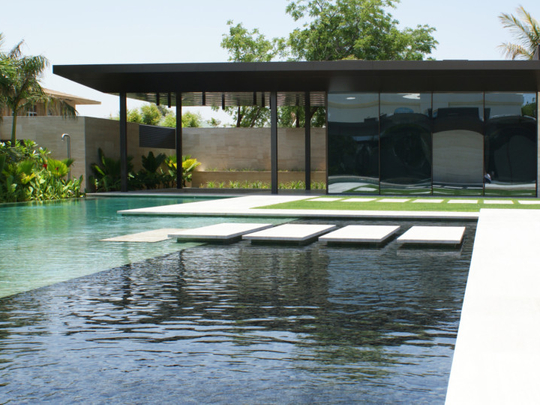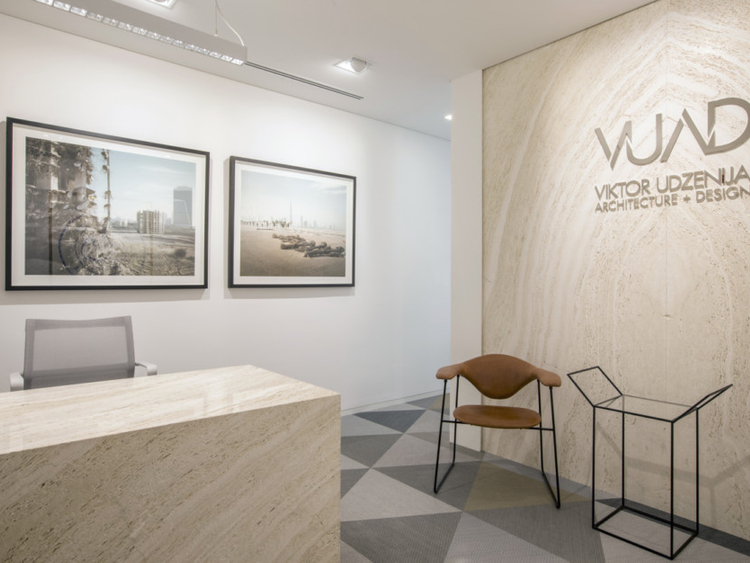
The Dubai Design District-based architect Viktor Udzenija is one of the region’s most vocal proponents of sustainable design. His practice, VUAD, consistently seeks new means of minimising impact of its works on the environment. “Our goal is to create durable buildings that respond to a changing environment and have minimal impacts on pollution and carbon emissions,” says Udzenija. Here he shares the principles that guide his team to deliver award-winning, eco-sensitive projects.
Environmentally sensitive design
Middle Eastern architecture — particularly residential design — has devised a strong vocabulary to protect the inhabitants from the harsh sun. Traditionally, this was achieved by the means of small openings in the facade and in present times, heavily tinted windows. While these measures work, they have a negative impact on the inhabitant’s perception of the outside world and nature around the built envelope.
As designers, we need to strive for means to negate this visual boundary between indoors and outdoors whilst still ensuring that the surrounding environment wouldn’t have an adverse impact on quality of life inside or the overall sustainability of the project.
By creating recessed facades, the structure of the building serves as a shading canopy. This allows us the possibilities of large scale floor to ceiling windows in minimally tinted glass, while keeping the glare and heat at bay.
Intelligent landscape design
Given the region we live in, soft landscape around the built mass is imperative. Planted surfaces and water bodies naturally condition the surrounding air, creating micro-climates around these buildings. This helps in lowering our perception of outdoor heat, thus bettering our comfort levels outside of the air-conditioned built masses. These additions are crucial in allowing users to freely move and enjoy the outdoors, while connecting with nature even in the hotter summer months.
While selecting materials for landscape, it is important to consider their purpose — this helps in minimising drastic breaks in one’s visual lines, as well as predict their wear with time. For example — hard scape surfaces that are in direct contact with the inhabitants (floors) should ideally be in lighter shades in order to reflect light and heat. While considering inclusion of water bodies and foliage, it is important that the user let practical aspects such as suitability to the climate and maintenance guide their design decisions.
Eco-conscious materiality
It is important that principles of sustainability guide not only the design and construction of the exterior, but also play a critical role in the manifestation of the interiors. Choice of materials and finishes guide in minimising the carbon footprint and eco-impact of any project.
While specifying materials and finishes, it is prudent to consider suppliers and manufacturers that are environmentally conscious. Where possible, reach out for products that are made from recycled materials — woven vinyl flooring, reconstituted stones and consciously sourced upholstery for example. At the very least, avoid products that cannot be recycled.
As consumers look for lighting solutions that deliver on high design and high performance, LED fittings — that consume less energy and are long lasting — are paving the way. Home automation offers another means of optimising a project’s energy consumption. From rigging lights to respond to occupancy and external lighting conditions, to adjusting internal temperature modules through apps on your smartphone, if you want to help the environment, start with your home.
Cultural heritage
The Middle East has battled adverse climates historically, resulting in strong design directives that can shield us even today. Be it the typical Arabic courtyard house that is prevalent across the Middle East or the ornate Islamic geometries that inform the designs of the mashrabiya screens, taking inspiration from regional elements and reinterpreting them for contemporary living not only shows appreciation for regional culture, it also helps evolve a tried and tested architectural vocabulary that can be applied globally.









